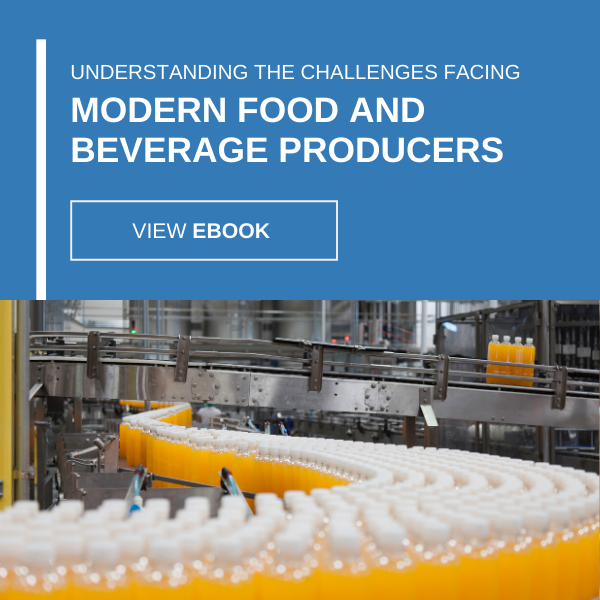
4 Food and Beverage Manufacturing Trends on Tap for 2020
It’s the food and beverage industry’s job to appeal to consumer tastes by keeping tabs on what’s hot and what’s not. In the 1990s, for instance, “fat free” or “reduced fat” was all the rage, evidenced by the variety of products with such descriptions featured in bold typeface on cartons, cardboard and boxes. Fast forward to today, thanks in part to advancements in nutrition science, fat is back and is recommended in low-carb diets such as Atkins and Keto.
What are the major food and beverage manufacturing trends on tap for 2020? One thing the food and beverage industry is fairly certain about is 2020 ending in the black, with earnings expected to top 2019. Aside from that, what’s hot and what’s not will be fueled by health.
Here’s more on this and what other aspects of these food manufacturing trends that will be “in” as Americans shop for snacks, brunch, breakfast, and lunch:
1. Healthy and nutritious
Health and nutrition never goes out of style. You name the year or the poll, consuming better, more wholesome food is always a priority for most Americans, as a 2018 Gallup survey showed virtually all of the people polled said they at the very least “tried” to include fresh fruits and vegetables in their meals.
“The plant-based meat industry is presently valued at approximately $4.5 billion.”
However, in some ways, what’s considered good for you is in the eyes of the beholder, as health goals largely determine the items consumers buy for themselves and their loved ones. One of the more popular, “healthier” products of late are plant-based meat. In addition to restaurants offering these poultry and beef alternatives, so too are food manufacturers that distribute to delis, grocers’ freezers and meat sections. According to the Good Food Institute, the plant-based meat industry is presently valued at approximately $4.5 billion, up 11% from 2018 and 18% from 2017 at $3.4 billion. Household names like Perdue Farms and Tyson Foods are among the major meat suppliers and manufacturers who now offer plant-based options in lieu of chicken or beef, the Detroit Free Press reported.
Similarly, plant-based milks — like almond, flax and oat — are also anticipated to rank highly with health-conscious customers. The report found that plant-based milk revenues in 2019 reached $1.8 billion in 2019, well ahead of other plant-based dairy (cheese product, yogurt, etc.).
Aside from the fact that plant-based foods tend to be lower in calories than their traditional counterparts, they also usually are free from preservatives and ingredients like high fructose corn syrup, which have been linked to adverse health effects such as insulin resistance and high blood pressure.
2. CBD infusion
Few changes have been more widespread than the decriminalization of marijuana. As noted by the National Conference of State Legislatures, nearly a dozen states and the District of Columbia have legalized recreational usage, the latest being Illinois in May. Sales as a result have skyrocketed, as have the inclusion of cannabinoids or CBD, in various types of edibles.
Found more frequently in snacks, sweets, sodas and gummies, CBD derives from the hemp plant. It’s naturally occurring properties have been linked to a number of positive health benefits, both in humans as well as pets. For example, CBD oil products like Cannanine are used to treat dogs and cats with moderate joint pain and separation anxiety, among other quality of life issues. CBD oil is usually sold with the THC element eliminated or greatly reduced, so that the product doesn’t cause a “high” sensation.
However, legal experts caution food manufacturers to be sure they understand what laws are on the books before they start introducing CBD-infused offerings.
“So much of [the CBD market] is operating in the absence of regulation, and states take widely different approaches,” said Daniel Shortt, a Seattle-based attorney, in an interview with Quartz. “You have to know your local law.”
3. Less or no alcohol
While no industry is recession proof, the beer and wine industry rarely have to worry about profitability. However, perhaps in an effort to expand their customer base, more manufacturers are churning out drinks sans alcohol, according to the Detroit Free Press. Food science has enabled developers to mimic the flavor profile of martinis, bourbons, whiskeys and gin-and-tonic, without the intoxicating element. Some manufacturers have even begun producing non-alcoholic social tonics that claim to produce a buzz using botanical ingredients like hibiscus and licorice root.
4. Gluten free
Gastrointestinal discomfort is one of the primary symptoms of celiac disease, which affects an estimated 18 million Americans, according to Beyond Celiac. Gluten is a wheat protein that serves as a binding agent, typically found in cereals, bread, pastries and pasta. However, with more people allergic to gluten, food suppliers are expanding their offerings.
Some manufacturers already sell foods that are naturally gluten free. General Mills, for example, labels its variety of Cheerios options with a “gluten free” seal. Cheerios is consistently among the most sold cereal products among Americans. While high carbohydrate cereals aren’t as popular with the public as they used to be — sales have been flat for the past three years in a row for General Mills, according to the Wall Street Journal — manufacturers are using gluten-free labeling to entice buyers and provide greater clarity on ingredients for nutrition fact finders.
What food manufacturing trends will go away? What ones are here to stay? No one knows for certain, as the ultimate decider will be consumers; dining and grazing desires are always made apparent by their paying dollar. Regardless of what you make or the ingredients you need to put it all together, USC Consulting Group can provide you with the process efficiencies to more effectively produce a high quality product that can whet your customers’ appetites and satisfy their nutritional needs. Visit our Food & Beverage page to learn more about how we can help you succeed in an industry dominated by trends.








